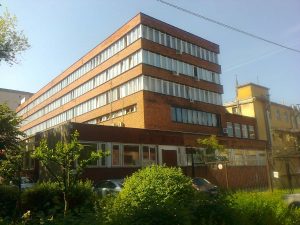REMIX Radio Engineering Company
X. Saint László Square
Production and manufacturing of electronic components:
Film and wire resistors
Paper capacitors
Film and wire potentiometers
Radio frequency component manufacturing
- Denes Gabor, engineer
Year |
Number of people |
|---|---|
| 1980 | 3.000 |
Film and wire resistors, paper capacitors, film and wire potentiometers, radio frequency filters. From the 60s: plastic dielectric capacitors, metal film resistors, potentiometers, integrated component modules. In the 1980s, it produced 400 million pieces of electronic components.
The factory's development and technology engineers have achieved significant results in the field of vacuum technology and chemical (CrNiP) production of special thin metal layers. Among other things, they have solved the mass production of aluminum evaporation on paper and plastic foil substrates, and the application of CrNi and CrNiC high-stability resistance layers on ceramic and glass substrates (by sputtering and electron beam).
1950-1960 In accordance with the design instructions of the time, numerous components for military purposes were developed and manufactured.
From the second half of the 1960s, the production of modern components, including plastic dielectric capacitors, metal film resistors, potentiometers (such as the volume control of a radio) and integrated component modules, began, reducing (replacing) Western component imports.
From the second half of the 1960s, the production of insulator-based integrated circuits began: various thick- and thin-film circuits were made according to individual user specifications.
From the mid-1970s, with the financial support of the then OMFB (National Technical Development Committee), significant Western cutting-edge technologies were installed in the Szombathely factory: automatic plastic film capacitor production lines, various layer resistor production lines and others.
In the 1980s, it employed approximately 3,000 people nationwide and produced almost 400 million pieces of electronic components annually, worth approximately 1,500 million forints, exclusively for domestic use.
It supplied 90% of the components needs of the domestic appliance industry.
Founded in 1932 under the name Always, Miklós Fodor is the majority owner
Until 1937, it belonged to the Tungsram capital interest group.
In 1937, Miklós Fodor and his family became 100% owners, and it was then that the company took the name REMIX Radio Technology Ltd.
Until the beginning of 1948, the company was led by the founder, Miklós Fodor.
1949 nationalization of REMIX Radio Engineering NV (NV=national company)
In 1950, the word "NV" disappeared from the name and was replaced by the term "Company".
In the late 1950s, based on a government decision, the factory relocated its significant production capacity to the factory unit established in Szombathely. Initially, film and wire resistors were manufactured here, and then various capacitors.
In 1992, it was acquired by Telefunken and renamed TEMIC.
The company name comes from the combination of the French words "resistance mixte", which refers to the mixture of bakelite-carbon black-clay-graphite layer resistors.
Dénes Gábor was Remix's engineer for a short time in the 1940s also the later Nobel Prize-winning inventor of holography.
Created: 2016.07.17. 12:25
Last modified: 2024.03.07. 20:12

